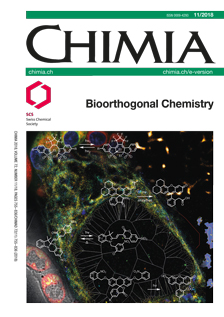Modern Ligation Methods to Access Natural and Modified Proteins
DOI:
https://doi.org/10.2533/chimia.2018.802Keywords:
Chemoselective ligation, Native chemical ligation, Protein modification, Protein semi-synthesisAbstract
Proteins and peptides are gaining increasing interest as tools and targets in fundamental research and drug discovery. Growing research applications have prompted the need for methodologies that produce homogenous peptide and protein material. The development of efficient, chemoselective ligation reactions using unprotected peptide fragments presents a key solution for this challenging task. This review outlines modern ligation methods that enable the synthesis of both native, and also labelled or post-translationally modified peptides and proteins. The ligation methods herein discussed focus on the formation of the backbone amide bond.Downloads
Published
2018-11-30
Issue
Section
Scientific Articles
License
Copyright (c) 2018 Swiss Chemical Society

This work is licensed under a Creative Commons Attribution-NonCommercial 4.0 International License.
How to Cite
[1]
A. L. Baumann, C. P. R. Hackenberger, Chimia 2018, 72, 802, DOI: 10.2533/chimia.2018.802.







